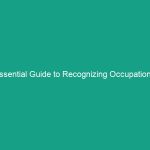Introduction
Good morning team! Today, we’re going to talk about something that is crucial to our daily operations: Essential Sequencing Tips to Avoid Critical Risks in HSE Practices. Understanding how to sequence our tasks effectively can significantly reduce workplace Hazards and enhance our Safety culture.
Why is this important? Well, every day, we face numerous risks in our work Environment. By implementing proper sequencing techniques, we can prevent accidents, ensure compliance with Safety Regulations, and most importantly, protect ourselves and our colleagues.
Understanding Essential Sequencing Tips
Essential sequencing tips refer to the methods and strategies we employ in organizing our tasks to prioritize safety and efficiency. In HSE practices, this means structuring our work activities in a way that minimizes risks and enhances safety.
The key to effective sequencing lies in understanding how our tasks interrelate. For example, performing a risk assessment before starting a project can help identify potential Hazards. This organized approach can prevent accidents and ensure that Safety Measures are in place before work begins.
One common misconception is that Safety Measures can be implemented at any stage of a project. In reality, the earlier we integrate safety into our planning and execution, the more effective those measures will be.
Key Hazards, Risks, and Safety Considerations
Now, let’s discuss some specific hazards and risks associated with poor sequencing in HSE practices:
- Inadequate Risk Assessments: Failing to assess risks before starting work can lead to accidents and injuries.
- Poor Communication: Lack of clear communication about task priorities can result in misunderstandings and unsafe practices.
- Neglecting Personal Protective Equipment (PPE): Not wearing appropriate PPE during the right phases of a task increases exposure to hazards.
- Ignoring Emergency Procedures: Not accounting for potential emergencies in your sequencing can lead to chaotic and unsafe responses.
The consequences of ignoring these safety protocols can be severe, leading not only to personal injury but also to significant financial losses for the company. Remember, safety is not an option; it’s a priority.
Best Practices, Procedures, & Actionable Advice
Let’s look at some Best Practices that can help you implement effective sequencing in your HSE practices:
1. Conduct Thorough Risk Assessments
Before starting any project, conduct a comprehensive risk assessment. Identify hazards, evaluate their potential impact, and determine how to mitigate them. Always involve your team in this process to gain diverse insights.
2. Develop a Task Sequence Plan
Create a detailed plan that outlines the sequence of tasks. Ensure that safety protocols are integrated into each phase of the task. For instance, if you’re working at heights, ensure that all safety equipment is checked and in place before beginning work.
3. Communicate Clearly
Establish clear communication channels among team members. Use safety briefings to discuss task sequences and emphasize the importance of adhering to safety measures. This can prevent misunderstandings that might lead to unsafe practices.
4. Monitor and Adjust
As work progresses, monitor the situation and be ready to adjust your plans as necessary. If unforeseen hazards arise, address them immediately and re-sequence tasks if needed to maintain safety.
5. Continuous Training and Improvement
Invest in regular training sessions that focus on HSE practices and sequencing. Share case studies of incidents that occurred due to poor sequencing to reinforce the importance of following safety protocols.
Regulations, Standards, and Compliance
It’s essential to be aware of the regulations and Standards that govern our industry. Compliance with OSHA (Occupational Safety and Health Administration) standards and other relevant safety regulations is not just a legal obligation; it’s vital for protecting our workforce.
For example, osha‘s guidelines emphasize the importance of a systematic approach to safety, which includes effective sequencing. By adhering to these standards, we not only protect ourselves but also ensure that our company remains compliant and avoids potential penalties.
Employee Engagement & Discussion
Now, I’d like to open the floor for discussion. Here are a few questions to consider:
- What safety challenges have you encountered related to sequencing in your tasks?
- Can you share an experience where effective sequencing helped prevent an accident?
- What additional measures do you think we could implement to improve safety in our sequencing practices?
Feel free to share your thoughts and experiences. Your input is invaluable in enhancing our safety culture.
Conclusion & Key Takeaways
In conclusion, understanding and implementing Essential Sequencing Tips is crucial for avoiding critical risks in HSE practices. By conducting thorough risk assessments, developing a task sequence plan, communicating effectively, monitoring progress, and investing in training, we can significantly enhance our Workplace Safety.
Remember, safety is everyone’s responsibility, and prioritizing it in our work processes is essential. Thank you all for your attention today, and let’s commit to applying these practices daily to ensure our safety and the safety of those around us.


